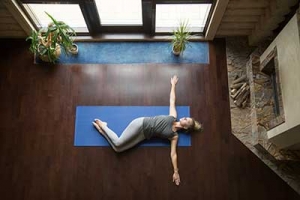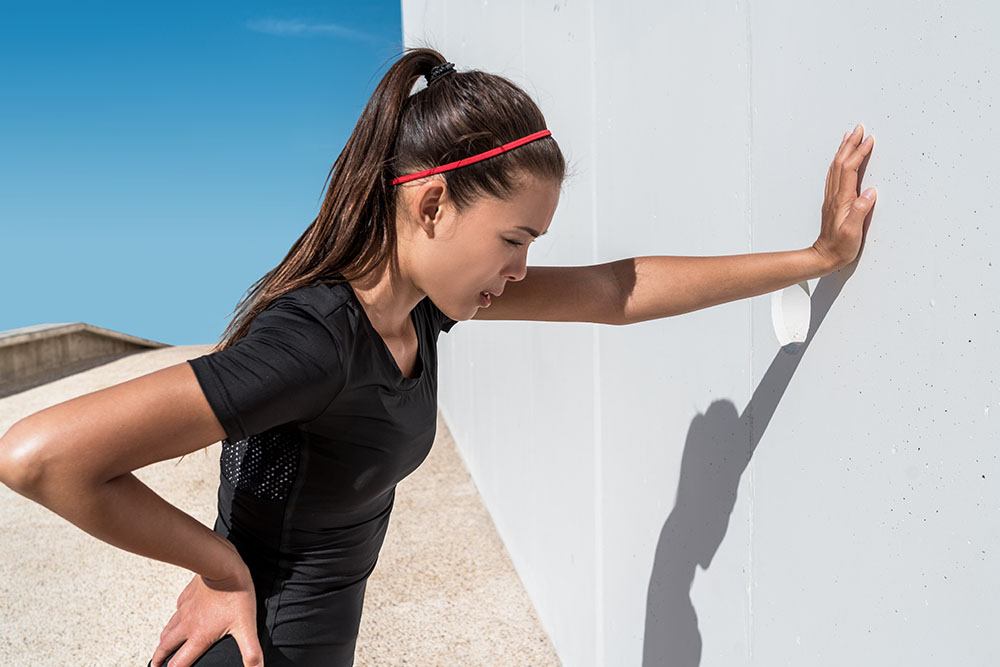Exercising With An Autoimmune Disorder

Hunter Bennett
Exercise is hands down the most important thing you can do for your body.
It improves the health of your heart, muscles, and bones, staves off the onset of physical and mental illness, and keeps you functionally capable well into your golden years.
To be completely honest, it is the closest thing we have to the fountain of youth.
However, it isn’t always as easy as simply jumping out of bed and going for a run. Some people need to be a little more careful with how they choose to incorporate exercise into their lives.
Which is why exercise and autoimmune disorders are such an interesting topic.
What are autoimmune disorders?
An autoimmune disorder describes a unique type of condition where your own immune system starts to attack your own body.
You see, your immune system is set in place to help protect your body against any external bacteria or viruses. If it happens to sense these invaders, it sends out a number of specific cells to destroy them.
With this in mind, under normal circumstances, your immune system is pretty good at telling the difference between your own cells and any foreign invaders.
However, this isn’t the case with people who suffer from an autoimmune disorder.
In this scenario, your immune system mistakes certain parts of your body as foreign invaders. It then releases those cells into the area, which attempt to kill off that part of your body. As I am sure you can imagine, this can lead to tissue damage, declines in health, and illness.
Some autoimmune disorders may only affect a single organ, others may only impact upon certain types of tissues (like your joints, for example), while some can impact your entire body.
Common types of autoimmune disorders include:
- Celiac disease
- Irritable bowel syndrome
- Lupus
- Rheumatoid arthritis
- Type I diabetes
Related Article: The Autoimmune Athlete
What causes autoimmune disorders?
This is where things get a little bit difficult.
Despite an abundance of research into the area, the reason the people contract an autoimmune disorder remains mostly unknown. This ultimately comes down to the fact that autoimmune disorders can present themselves in several different forms, and attack many of the body’s tissues.
In many cases, the disease is thought to be the result of an inherited genetic disposition or mutation.
Alternatively, it can also occur in response to the presence of an external environmental factor. For example, a chemical that comes from a particular food, stress, a specific medication, or even ultraviolet light.
It is also for this reason that the disease is often misdiagnosed, and at times poorly treated.
Can I exercise if I have an autoimmune disorder?
I would like to keep this section as short as possible because it simply reaffirms pretty much everything we know about exercise.
Yes, you can exercise with an autoimmune disorder.
In fact, it is often recommended – although there are some caveats around this (which we will touch on later).
You see, people with autoimmune disorders tend to be less physically active than individuals from the general population. While this could be due to several different reasons, it does result in a similar outcome – people with autoimmune disorders tend to be less healthy in general.
This decline in fitness can exacerbate the disease, which over time can cause further reductions in health and function.
So not only can you exercise, but you should exercise.
Does exercise help autoimmune disorders?
We know that exercise helps to improve upon many of the declines in health that people with an autoimmune disorder experience as a result of their inactivity lifestyles – but does it help the disorder itself?
Well, while the research is only in its infancy, there are certainly some positive signs.
You see, many autoimmune disorders are inflammatory in nature. This means that they both cause inflammation and are exacerbated by inflammation (Perandini, 2012).
Now, as bad as this sounds, it also means that exercise offers a potential solution.
You see, while exercise does indeed induce a small amount of inflammation in the short-term, over time it has been shown to cause vast improvement in chronic inflammation – which can have a profound impact on the symptoms of many autoimmune disorders.
With this in mind, and when used correctly, exercise should be considered a must-have in the treatment plan of anyone suffering from an autoimmune disorder (Sharif, 2018).
Can exercise prevent autoimmune disorders?
With all this in mind, it has been hypothesized that exercise may indeed provide a means of preventing autoimmune disorders, as well as helping reduce their symptoms (Gracia, 2006).
As previously mentioned, exercise causes significant reductions in inflammation throughout the entire body – and remember, inflammation is thought to be one of the key drivers for the onset of autoimmune disorders.
With this in mind, maintaining a regular exercise routine appears to be a very good way of reducing your risk of developing an autoimmune issue.
Can exercise induce an autoimmune disorder flare up?
This is where things start to get a little more complicated.
You see, we know for a fact that, in the long run, exercise helps reduce inflammation and improve immune system function. This can improve autoimmune disorder symptoms, and may even play a role in their treatment.
However, we also know that many people suffering from an autoimmune disorder tend to flare up in response to stress (Stojanovich, 2008).
And of course, exercise is a type of stress.
As a result, some people do actually experience flare-ups in response to an acute bout of exercise. While this can be completely individual, it appears to occur most often when the bout of exercise is extremely intense relative to their current fitness levels.
We could consider this to be a type of exercise-induced autoimmune flare up.
Alternatively, a flare-up may also occur after exercise when the individual is simultaneously suffering from an abundance of life stress.
In this scenario, you can see the bout of exercise as the final straw that breaks the camel’s back. It essentially acts as the final piece of accumulative stress that sends the individual into a flare-up.
We would often consider this to be a stress-induced autoimmune flare up.
Now, this doesn’t necessarily mean that all forms of high-intensity exercise are out of the question. In fact, given the myriad of health benefits it provides, it should never be out of the question.
It simply means that you should know your individual capabilities, and exercise accordingly.
Additionally, if you are feeling under a whole heap of stress, tired, and worn out, maybe keep the exercise to very light intensity.
Simple.
Exercise Flare-Up Recovery Times
Taking all of this into consideration, it is important to note that the duration of exercise-induced autoimmune flare-ups also seems to be very individual. In some cases, they may last a day, whereas in others they may last up to a week.
Many people who suffer these type of flare-ups seem to think it can be dictated by how much they push themselves.
In short, they seem to think that if they exercise well beyond their current capabilities (or in a state of stress), then it will last longer.
It is for this reason that paying attention to how you feel is so very important.
Autoimmune disorder exercise recommendations
When it comes to making clear exercise recommendations for autoimmune disorders, it can become quite challenging, as the disease does present itself in so many different forms.
With this in mind, it still in your best interest to strive for the physical activity recommendations made by the world health organization, which suggest you maintain (WHO, 2011):
- A minimum of 150 minutes of moderate intensity aerobic exercise per week
- A minimum of two sessions of resistance training per week, that focuses on all major muscle groups per session
This is because both aerobic exercise and resistance training have been shown to improve immune system function, boost health, enhance the quality of life, and reduce symptoms in people suffering from autoimmune disorders (Sharif, 2018).
Now, the way in which you achieve this is dictated by your capabilities at an individual level.
If you have been training for quite some time, have a good level of fitness and a solid foundation of strength, then you might be perfectly fine to jump into some moderate intensity exercise. This could mean consistent aerobic activity, and some moderately heavy strength training.
However, if you have not exercised in quite some time, then your approach should be markedly different. In this scenario, you might start off with some light walking and some bodyweight strength training, and see how you respond.
You would then try and build up this intensity and volume as your fitness increases.
The best exercises for autoimmune disorders
Taking the above into consideration, I wanted to outline what I believe to be three of the most useful types of exercise for people suffering autoimmune disorders, being yoga, strength training, and endurance training.
Yoga
Yoga is arguably the perfect starting point for people with an autoimmune disorder. It is relatively low intensity and can improve aerobic fitness and muscular strength. It has also been shown to reduce inflammation and improve the quality of life (Stephens, 2017).
For those who have been fairly inactive while suffering from an autoimmune disease, then this is a great place to start.
Related Article: 3 Reasons You Should Hit The Yoga Mat
Strength Training
Next up we have strength training.
For a long time, people thought that lifting weights was solely for meatheads – however, over the last couple of decades, we have quickly realized that it is, in fact, one of the best forms of health-boosting exercise on the planet.
It has been shown to improve muscle health, cause lasting improvements in functional capacity, and elicit marked reductions in inflammation.
All of which makes it the perfect option for people suffering from an autoimmune disorder (Diaz, 2018).
The thing to remember here is to start slow.
Weight training places a substantial amount of load on the body, which may induce a flare-up. I would recommend starting with lighter loads and using high rep ranges (think 3 sets of 12 repetitions) to minimize joint stress.
Endurance Training
Lastly, I wanted to touch on endurance exercise.
Like both yoga and strength training, the use of a long-term aerobic endurance exercise program has been shown to cause significant reductions in chronic inflammation and improves immune system function.
This makes it a great option for anyone suffering from an autoimmune disorder (Perandini, 2014)
Moreover, endurance training could also be considered the ‘gold standard’ when it comes to improving cardiovascular health – which is arguably the biggest predictor of all cause mortality (AKA death) in our population.
But, again, its implementation requires some consideration.
Those exercises modalities that induce substantial joint loads (such as running, skipping, and sprinting) may not be the best choice for people with joint related autoimmune disorders. Subsequently, in this scenario, things like cycling, rowing, and swimming are great options.
Similarly, high-intensity interval training may not be the best option for those individuals who tend to experience exercise-induced flare-ups. Lower intensity longer duration stuff would be the go-to here.
Take Home Message
Exercise has been shown to have a hugely positive impact on nearly every disease on the planet – and autoimmune disorders are no different.
However, the way in which it is implemented is of the utmost importance.
So, make sure you take the time to work out what type of exercise suits you best, and then implement it slowly. Remember, improving your health and function through exercise should be considered a marathon, not a sprint.
References
Perandini, Luiz Augusto, et al. “Exercise as a therapeutic tool to counteract inflammation and clinical symptoms in autoimmune rheumatic diseases.” Autoimmunity reviews 12.2 (2012): 218-224.
Sharif, Kassem, et al. “Physical activity and autoimmune diseases: Get moving and manage the disease.” Autoimmunity reviews 17.1 (2018): 53-72.
Gracia, M. C. “Inflammatory, autoimmune, chronic diseases: Bad diet and physical inactivity are causes or effects?.” Medical hypotheses 66.5 (2006): 939-944.
Stojanovich, Ljudmila, and Dragomir Marisavljevich. “Stress as a trigger of autoimmune disease.” Autoimmunity reviews 7.3 (2008): 209-213.
Campbell, John P., and James E. Turner. “Debunking the myth of exercise-induced immune suppression: Redefining the impact of exercise on immunological health across the lifespan.” Frontiers in immunology 9 (2018): 648.
World health organization (WHO). “Global Recommendations on Physical Activity for Health: 18-64 years old” (2011).
Stephens, Ina. “Medical yoga therapy.” Children 4.2 (2017): 12.
Díaz, Buenaventura Brito, et al. “Myokines, physical activity, insulin resistance and autoimmune diseases.” Immunology letters (2018).
Perandini, Luiz A., et al. “Exercise training can attenuate the inflammatory milieu in women with systemic lupus erythematosus.” Journal of Applied Physiology 117.6 (2014): 639-647.
















